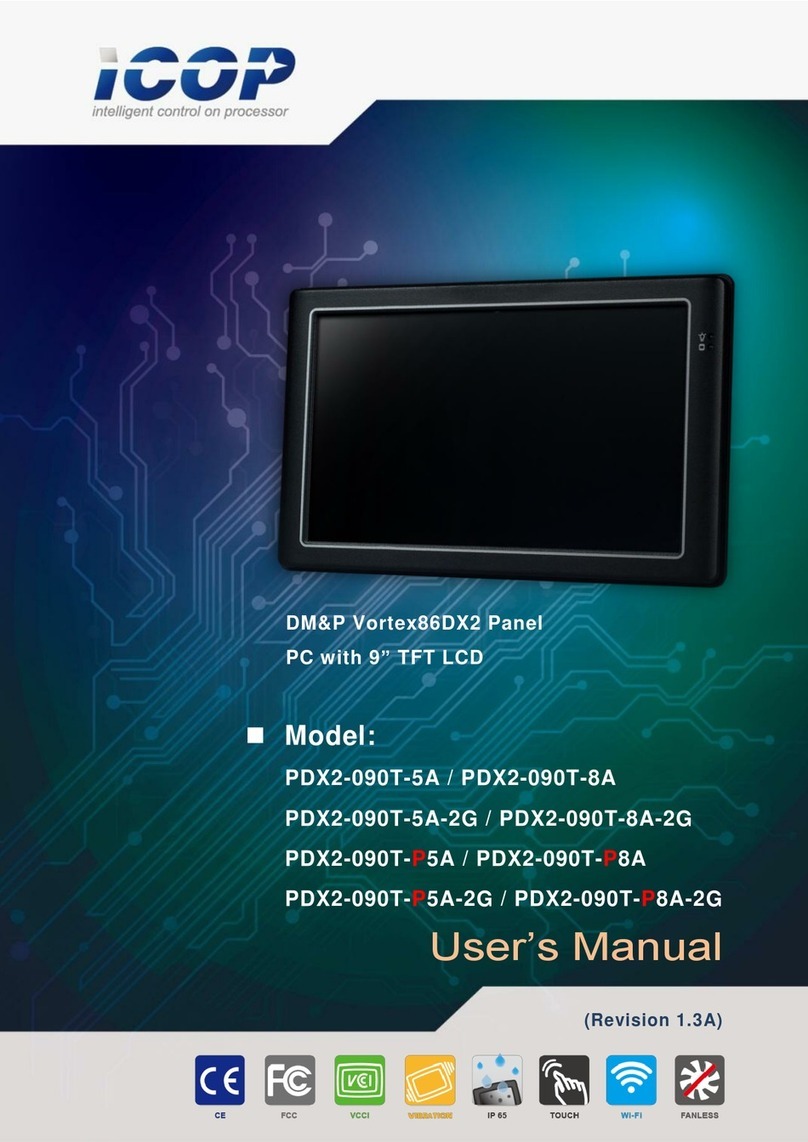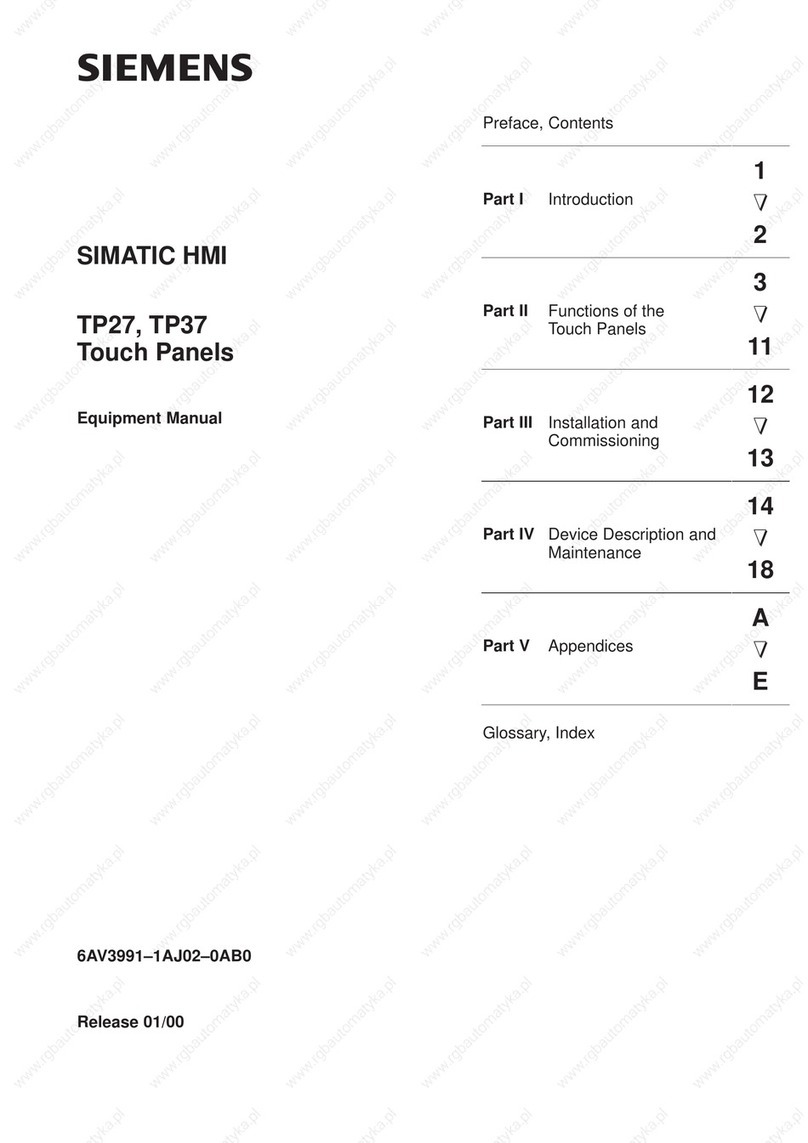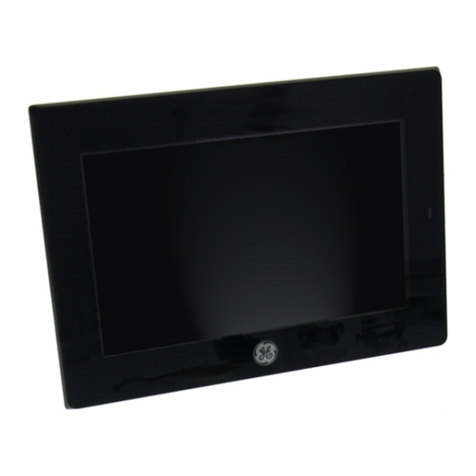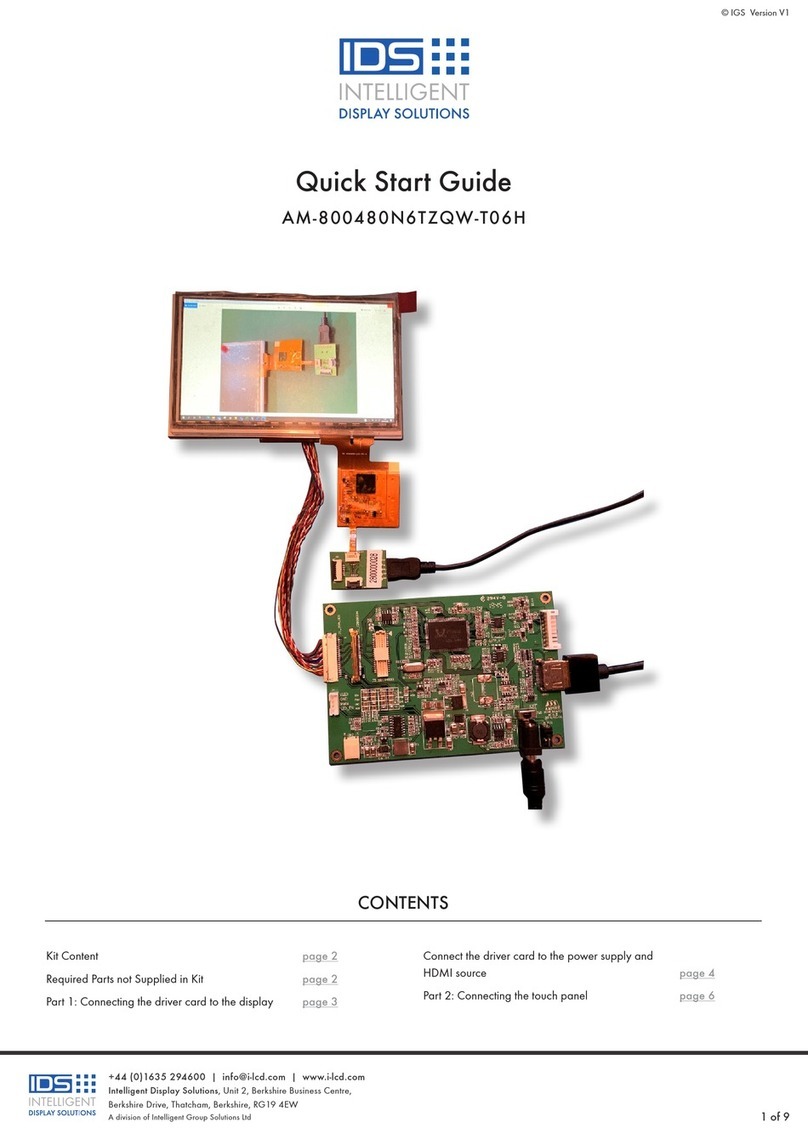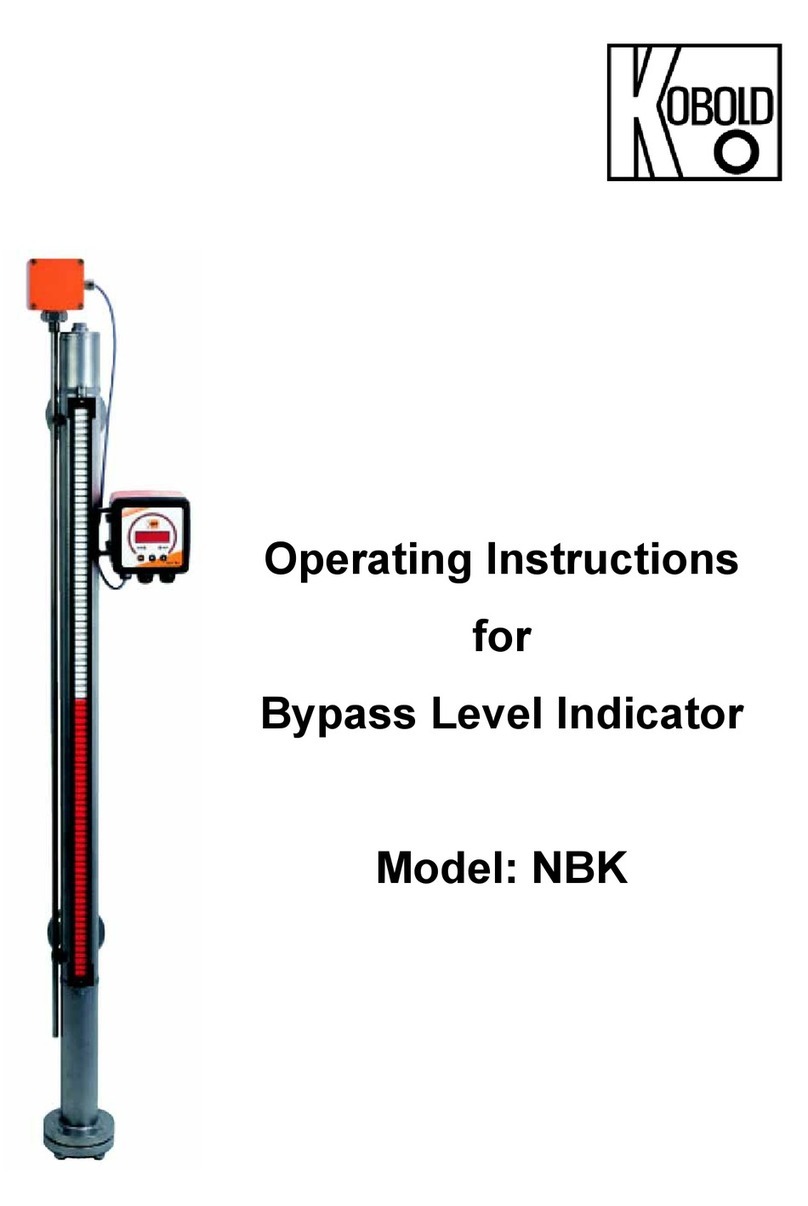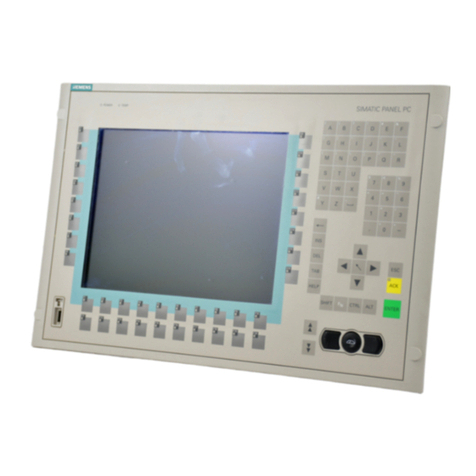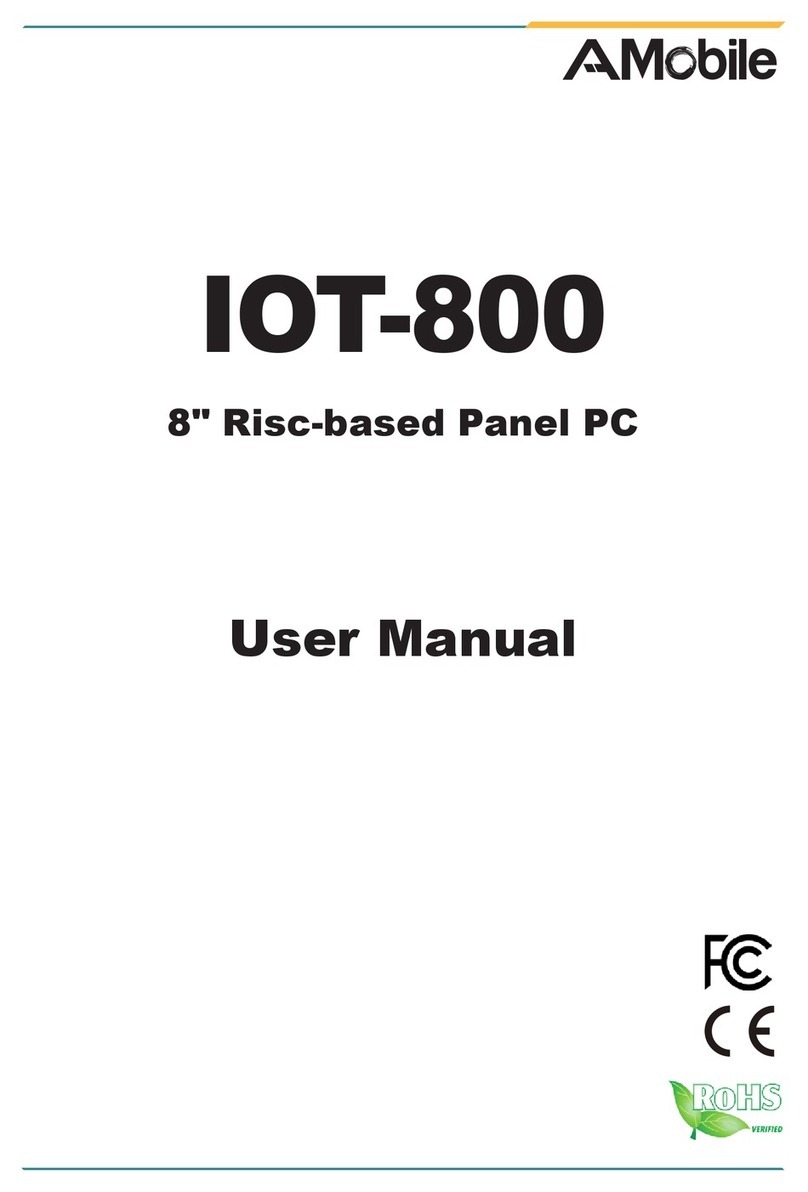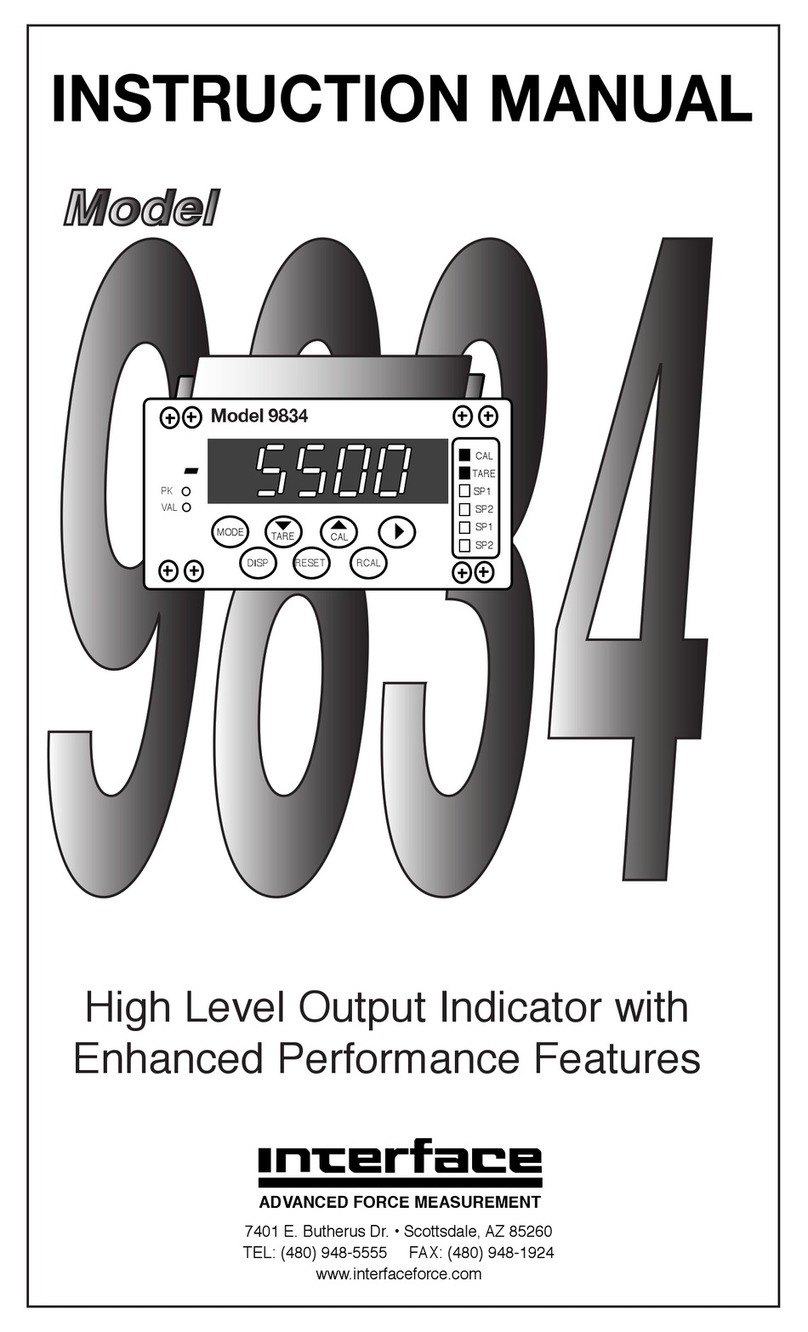SperryMarine Rudder Angle Indicator System User manual

Northrop Grumman Sperry Marine B.V. (Representative Office)
Woltmanstr. 19 • D-20097 • Hamburg, Germany
Tel.: +49-40-299 00-0 • Fax: +49-40-299 00-146 • E-mail: service.eu@sperry.ngc.com
Operation, Installation and Service Manual
RUDDER
RUDDER
RUDDER
RUDDER
X
RUDDER
RUDDER
Rudder Angle Indicator System
05014-0128-01; 056357/B; 05 Oct 2017

056357/B RAIS
© 2017 Northrop Grumman Sperry Marine B.V.
This document and the information herein is and remains the intellectual property of Northrop
Grumman Sperry Marine B.V. [NGSM BV] and its associate companies and may not be copied,
reproduced or translated without the express permission of NGSM BV. A limited license is grant-
ed for the user to reproduce this documentation for his own internal use, but not for distribution
to third parties. Reproduction of this document for resale or commercial gain is expressly pro-
hibited.
Specifications were correct at time of press but may be varied in accordance with NGSM BV’s
policy of continuous product development.
Any technical content should be verified with NGSM BV.
Sperry Marine, with major engineering and support offices in New Malden, England, and
Hamburg, Germany, is part of the Northrop Grumman Navigation & Maritime Systems Division
N&MSD.
Revision Record
Rev. Date Remarks
B 05 Oct 2017 updated release, RAIS system definition implemented, safety notes for
serial output and RS-422 output usage added
A 15 Jun 2009 initial release

RAIS 056357/B
iii
Contents
Chapter 1: Introduction
1.1 System Description................................................................................... 1-1
Intended Use ............................................................................................. 1-1
Not Intended Use ...................................................................................... 1-1
1.2 Design and Main Features........................................................................ 1-2
1.3 Principle of Operation ............................................................................... 1-3
1.4 RAIS Overview .......................................................................................... 1-4
System Components................................................................................. 1-4
1.5 RAIS Technical Data .................................................................................. 1-6
1.6 Declaration of Conformity ........................................................................ 1-9
Chapter 2: Operation
2.1 Normal Operational Mode........................................................................ 2-1
Chapter 3: Alarms System
3.1 Alarm Indication........................................................................................ 3-1
Alarm Status Output ................................................................................. 3-1
Serial Data Alarm Output ......................................................................... 3-1
3.2 Alarm Numbers ......................................................................................... 3-3
3.3 Viewing RAC Errors through SUSI .......................................................... 3-5
Chapter 4: Scheduled Maintenance
4.1 Maintenance by Shipboard Personnel .................................................... 4-1
4.2 Maintenance by Service Personnel ......................................................... 4-1
Chapter 5: Installation
5.1 Mechanical Installation ............................................................................ 5-1
5.2 Electrical Installation ................................................................................ 5-1
Rudder Angle Calibrator ........................................................................... 5-1
Rudder Angle Feedback Unit Potentiometer........................................... 5-2
Chapter 6: System Configuration
6.1 Initial system configuration ..................................................................... 6-2
Configuring the RAC with SUSI ............................................................... 6-2
6.2 System Parameters ................................................................................... 6-6
Feedback Type ........................................................................................... 6-7
Serial I/O..................................................................................................... 6-8
Relay Setup...............................................................................................6-11

056357/B RAIS
iv
6.3 In- and Output Calibration...................................................................... 6-12
Input Calibration Table ............................................................................ 6-14
Output Calibration Table......................................................................... 6-14
General Remarks on Calibration ............................................................ 6-15
Initial Calibration ..................................................................................... 6-16
Adding, Editing and Deleting Calibration Points .................................. 6-22
Input Calibration using Dummy Values................................................. 6-24
Chapter 7: Troubleshooting
7.1 General Troubleshooting Instructions ..................................................... 7-1
Location of Parts on the Rudder Angle Calibrator PCB .......................... 7-2
Terminal Boards and Connectors............................................................. 7-2
Exchangeable Components...................................................................... 7-2
Diagnostic LEDs......................................................................................... 7-3
Chapter 8: Corrective Maintenance
8.1 Updating the RAC Firmware with SUSI .................................................. 8-1
8.2 Replacing Alarm Output Relays ............................................................... 8-5
Appendix
A Setup and Configuration Tables
B Third party Documentation
C Drawings

RAIS 056357/B
v
Safety Instructions
Safety Notice Conventions
The following safety notice conventions are followed throughout this
manual:
DANGER
A Danger notice contains an operating or main-
tenance procedure, practice, condition, state-
ment, etc., which, if not strictly observed, will
result in injury or death of personnel.
WARNING
A Warning notice contains an operating or
maintenance procedure, practice, condition,
statement, etc., which, if not strictly observed,
could result in injury or death of personnel.
CAUTION
A Caution notice contains an operating or main-
tenance procedure, practice, condition, state-
ment, etc., which, if not strictly observed, could
result in damage to, or destruction of equip-
ment.
Note
A Note contains an essential operating or main-
tenance procedure, condition or statement,
which is considered important enough to be
highlighted.
Special safety symbols may be used in this
manual to indicate:
DANGER
Danger: Risk of electrical shock.
Used in conjunction with a Danger or Warning
notice.
CAUTION
Caution: Components are sensitive to electro-
static discharge.
Used in conjunction with a Caution notice.

056357/B RAIS
vi
General Safety Information for the Operator
CAUTION
Risk of misusage
The ALR sentence as serial output of the RAC is not MED complaint and
therefore NOT allowed as system setting for a ship under wheelmark
certification.
Always make sure that the ALR sentence setting is INACTIVATED when
the RAC is used on a ship under wheelmark certification.
CAUTION
Risk of misusage
The RS-422 output 1 and RS-422 output 2 of the RAC is not
MED compliant in case 38400 baud are selected as interface setting.
Always make sure that another baud rate setting (4880 or 9600 baud)
must be selected as RS-422 output 1 and RS-422 output, when the RAC is
used on a ship under wheelmark certification
Note
Regularly check the indication of the RAIs against the actual position of
the rudder angle shaft to make sure that calibration is applied properly
and the specified accuracy is maintained.
Note
A given alarm system may employ reverse output logic (closed on
alarm). In this case, powering off the Rudder Angle Calibrator will not
raise an alarm.
Note
For recording all parameter settings see “Setup and Configuration
Tables” in the appendix of this manual.
Note
All content of the appended third party documentation is on behalf of the
owners of the documentation. Sperry Marine is not responsible and not
liable for any content of third party documentation.
In case of doubt, verify the content of third party documentation with the
owners of the documentation.
Note
Sperry Marine Service:
In case of service refer to www.sperrymarine.com/offices for a list of
all Sperry Marine Offices and Service Agents worldwide.

RAIS 056357/B
vii
General Safety Information for Service Personnel
DANGER
Life danger through electrical shock
Certain alarm devices may operate with hazardous voltages, switched
by the alarm relay output contacts.
NEVER connect live wires to the unit’s terminals, when wiring up the
Rudder Angle Calibrator.
ALWAYS make sure that any external device or power supply to be con-
nected to the alarm relay outputs is de-energized and safeguarded
against accidental switching-on.
CAUTION
Risk of damage of electrostatic-discharge-sensitive components
Components on the Rudder Angle Calibrator PCB are sensitive to static
discharge.
While wiring up the Rudder Angle Calibrator, take the necessary precau-
tions to prevent electrostatic discharges.
CAUTION
Risk of damage of electrostatic-discharge-sensitive components
The Rudder Angle Calibrator contains electrostatic sensitive components.
Electrostatic discharge may permanently damage components.
When configuring the Rudder Angle Calibrator, take precautions to prevent
electrostatic discharge. Avoid touching any of the electronic circuitry.
WARNING
Risk of personal injury
To calibrate the feedback input, the rudder has to be moved over its
entire range. Always make sure that the steering gear is operative and
that the rudder may be actuated safely without any risk of personal
injury or damage to equipment, especially when the vessel is drydocked
and works are carried out by shipyard personnel.
Always inform the shipboard or shipyard personnel in charge of your
intention to actuate the rudder and obtain permission to operate the
steering gear for calibration purposes, before moving the rudder.
Note
The calibration procedures require that tasks are carried out at different
locations on the vessel.
If possible, use voice communication to instruct one or more helpers to
report the actual rudder angle indications as read from the rudder stock
scale and indicated at the RAIs respectively.
WARNING
Risk of injury
Connecting the RAC to a rudder angle feedback unit in parallel with the
steering gear feedback loop bears the risk of malfunction of the steering
gear in case of wire breaks or short-circuits resulting in possible injury
and/or damage.
Under no circumstances must the RAC be connected to a rudder angle
feedback unit potentiometer in parallel with the steering gear feedback
loop.

056357/B RAIS
viii
CAUTION
A
Risk of damage
As the feedback potentiometer supply voltage is provided by the Rudder
Angle Calibrator, connecting the RAC to a feedback potentiometer in par-
allel to any device other than a second Rudder Angle Calibrator bears the
risk of damage in case of wire breaks or short-circuits.
Never connect the RAC to a feedback potentiometer in parallel to any
device other than a second RAC.
CAUTION
Risk of misusage
The ALR sentence as serial output of the RAC is not MED complaint and
therefore NOT allowed as system setting for a ship under wheelmark
certification.
Always make sure that the ALR sentence setting is INACTIVATED when
the RAC is used on a ship under wheelmark certification.
CAUTION
Risk of misusage
The RS-422 output 1 and RS-422 output 2 of the RAC is not
MED compliant in case 38400 baud are selected as interface setting.
Always make sure that another baud rate setting (4880 or 9600 baud)
must be selected as RS-422 output 1 and RS-422 output, when the RAC is
used on a ship under wheelmark certification
Note
Generally, it cannot be guaranteed that the Rudder Angle Calibrator’s
parameter settings are left intact during a firmware update.
Before updating firmware, record all parameter settings to be able to re-
enter them manually, if required.
Calibration settings will not be touched when updating the firmware.
Note
For recording all parameter settings see “Setup and Configuration
Tables” in the appendix of this manual.

RAIS 056357/B
System Description 1-1
Chapter 1: Introduction
1.1 System Description
Intended Use
The Sperry Marine Rudder Angle Indicator System (RAIS) is a system for
electric rudder angle indication on maritime vessels and must be oper-
ated only from appropriately trained and educated personnel familiar
with all mandatory safety and operating procedures.
The Sperry Marine Rudder Angle Indicator System (RAIS) in total con-
sists of the Rudder Angle Calibrator (RAC), a microprocessor-controlled
signal conditioning device for electric rudder angle indicators, a series
of Rudder Angle Indicators (RAI) and a series of Rudder Angle Feedback
Units (RAFU) including limit switches and lever linkages.
Not Intended Use
The Sperry Marine Rudder Angle Indicator System (RAIS) is designed
for marine purposes only and therefore not allowed to be used for the
navigation of inland water vessels and river boats.
The ALR sentence as serial output setting of the RAIS is not MED com-
pliant and must therefore permanently be inactivated for all ships under
wheelmark certification.
The RS-422 output 1 and RS-422 output 2 of the RAC is not
MED compliant in case 38400 baud are selected as interface setting.
The 38400 Baud setting is therefore not allowed for all ships under
wheelmark certification and another baud rate setting (4880 or 9600
baud) must be selected.

056357/B RAIS
1-2 Design and Main Features
1.2 Design and Main Features
The Sperry Marine Rudder Angle Indicator System(RAIS) is a system for
electric rudder angle indication on maritime vessels.
The Rudder Angle Indicator System has been type approved by
DNV GL SE based on the
notification of the Federal Maritime and Hydrographic Agency of
Germany in compliance with the requirements of Marine Equipment
Directive (MED) 2014/90/EU of July 2014 as amended and is found to
comply with the requirements in the following specified regulations /
standards:
Regulation (EU) 2017/306, item No. MED/4.20.SOLAS 74 as amended,
Regulations V/18, V/19 & X/3
IMO Resolutions: A.694(17), MSC.36(63), MSC.97(73), MSC.191(79),
MSC.302(87)
and applicable to tests according:
(IEC 60945(2002) incl. corrigendum 1 (2008), IEC 61162series, ISO
20673(2007) and IEC 62288(2014)
and has been assigned certificate no. 47252-12 HH / 47253-12 HH.
For further details see “Declaration of Conformity” on page 1-9.
The RAC is used to attain ISO_20673 compliant overall calibration accu-
racy in RAI systems with conventional moving-coil indicators. It reads
the analogue signal from a rudder angle feedback unit and provides six
individually calibratable analogue signal outputs, and illumination sup-
ply terminals for the connected RAIs. To increase the number of availa-
ble outputs, two RACs may be connected in parallel to one feedback
potentiometer.
The RAC also provides two calibrated rudder angle outputs in serial for-
mat using the $--RSA sentence according to IEC 61162 (NMEA 0183).
To alert the operator of power failure and other alarm conditions, the
RAC provides two status relay signal outputs and also transmits alarm
status data via the $--ALR sentence according to IEC 61162 (NMEA 0183).
Figure 1-1:
Basic RAIS
with 1 RAC for
single-rudder system
Rudder Angle Calibrator
(RAC)
rudder angle
indicators
analogue out (6)
feedback signal in
feedback supply
rudder angle
feedback unit
RUDDER
X
serial data out
alarm status

RAIS 056357/B
Principle of Operation 1-3
In dual-rudder systems, RACs for the port and starboard rudder are used
in a paired configuration. Each unit reads the feedback signal and drives
the analogue outputs for its own side. Through a crosslink, it also reads
the other unit’s digital output and produces a $--RSA sentence including
port and starboard rudder angles according to IEC 61162 (NMEA 0183).
Figure 1-2:
RAIS with 2 RACs for
dual-rudder system
1.3 Principle of Operation
To attain an ISO 20673 compliant calibration accuracy for all RAIs con-
nected, the RAC applies calibration as part of the A/D conversion of the
analogue feedback signal as well as of the D/A conversion for each ana-
logue output.
An input calibration table maps the feedback input voltage to the corre-
sponding rudder angle for a number of significant rudder positions.
The actual feedback voltage is thus converted to a digital rudder angle
value and automatically corrected according to the stored calibration
table. This compensates for possible misalignment of the feedback unit
and non-linearity of the feedback potentiometer.
The corrected digital value forms the reference for both the serial data
output and the subsequent conversion to the six separate analogue out-
put voltages.
An output calibration table maps the digital rudder angle values to cor-
responding sets of analogue output voltages. This individually compen-
sates for the non-linearity, range variation and zero-offset of the
connected RAIs.
Figure 1-3:
RAIS:
principle of operation
PORT
X X
STB
PORT
X X
STB
port side RAC stbd. side RAC
VDR port + stbd.
rudder angles
Rudder Angle Calibrator (RAC)
data formatting
output calibration
input calibration
A/D conversion
D/A conversion
AD
xy DA
xy
$...
RUDDER
X

056357/B RAIS
1-4 RAIS Overview
1.4 RAIS Overview
The Sperry Marine Rudder Angle Indicator System (RAIS) in total con-
sists of the Rudder Angle Calibrator (RAC), a microprocessor-controlled
signal conditioning device for electric rudder angle indicators, a series
of different Rudder Angle Indicators RAI) types and a series of Rudder
Angle Feedback Units (RAFU) including limit switches and lever link-
ages.
System Components
Table 1-1:
RAIS system
components
System Component Name Stock No.
Rudder Angle Calibra-
tor (RAC), type 5014
074849-0000-000
RAI, third party, three
face panorama type,
(example)
060396-0000-000
(range ± 45°)
060397-0000-000
(range ± 70°)
RAI, standard type,
third party,
(example)
060327-0000-000
060328-0000-000
060334-0000-000
060335-0000-000
060338-0000-000
060339-0000-000
060352-0000-000
060353-0000-000
060357-0000-000
060359-0000-000
RAI, third party,
Panama type,
(example)
060325-0000-000
060326-0000-000
060331-0000-000
060337-0000-000
060332-0000-000
060362-0000-000
060340-0000-000
060341-0000-000
060354-0000-000
060355-0000-000
Rudder Angle Feed-
back Unit (RAFU);
type 4968-
074720-0000-000
074721-0000-000
074722-0000-000
074724-0000-000
074725-0000-000
074784-0000-000
074785-0000-000
074788-0000-000
074791-0000-000
074795-0000-000
074796-0000-000
03030
RUDDER
RUDDER

RAIS 056357/B
RAIS Overview 1-5
- Limit Switches (inside
RAFU housing, not
shown)
074723-0000-000
Lever Linkage 020508-0000-000
022501-0000-000
System Component Name Stock No.
Note
For all details regarding the Rudder Angle Indicators, refer to the third
party documentation from the supplier Faiveley Mors Smitt, as listed in
the appendix of this manual.

056357/B RAIS
1-6 RAIS Technical Data
1.5 RAIS Technical Data
Environmental Requirements
ambient temperature, operation -15 °C – +55 °C
ambient temperature, storage -25 °C – +70 °C
protection grade IP 23 to DIN EN 60529
environmental conditions / EMC in accordance with IEC 60945,
equipment category “protected
from the weather”
Power Supply
RAC supply voltage 24 VDC
RAC max. ripple content - 10 – + 20% Vpp
RAC power consumption 3 W max.
Rudder Angle Indicator System
power consumption
15 W max. in total,
for rudder angle indicator illumi-
nation via RAC:
RAC Magnetic Clearance
to standard magnetic compass 0.30 m
to steering magnetic compass 0.30 m
reduced, to standard magnetic compass 0.30 m
reduced, to steering magnetic compass 0.30 m
RAC Dimensions and Weight
width 230 mm
height 145 mm
depth 65 mm
weight 3.0 kg
RAFU Dimensions and Weight
width 293 mm
height 200 mm
depth 192 mm
weight 7.5 kg

RAIS 056357/B
RAIS Technical Data 1-7
RAC Signal and Data Inputs
rudder angle feedback input Wiper signal from rudder angle
feedback potentiometer;
±15 VDC supply voltage provided
by RAC.
RS-422 input NMEA 0183 / IEC 61162;
other side’s rudder angle in dual
rudder systems ($--RSA)
RAC Signal, Data and Status Outputs
analogue rudder angle outputs
(6x)
six independently calibratable
voltage outputs to moving-coil
rudder angle indicators,
±15 VDC max. into 10 k
RS-422 output 1 IEC 61162 (NMEA 0183),
4800
9600 or
38400 Baud*
rudder sensor angle ($--RSA)
RS-422 output 2 IEC 61162 (NMEA 0183);
4800
9600 or
38400 Baud*
rudder sensor angle ($--RSA),
set alarm state ($--ALR)
CAUTION
Risk of misusage
The RS-422 output 1 and RS-422 output 2 of the RAC is not
MED compliant in case 38400 baud are selected as interface setting.
Always make sure that another baud rate setting (4880 or 9600 baud)
must be selected as RS-422 output 1 and RS-422 output, when the RAC is
used on a ship under wheelmark certification
“Power Fail. / Gen. Alarm” output opto-isolated solid state relay;
peak off-state voltage 100 V
AC/DC, on-state current 100mA,
on-state resistance < 25,
isolation voltage 1500 Vrms;
configurable as NO or NC contact,
open if power off
“Spare” relay output
(for future use)
opto-isolated solid state relay;
peak off-state voltage 100 V
AC/DC, on-state current 100mA,
on-state resistance < 25,
isolation voltage 1500 Vrms;
configurable as NO or NC contact,
open if power off

056357/B RAIS
1-8 RAIS Technical Data
RAC Service I/O Port
USB service port Connects to a Windows host PC
through a vendor-specific USB
communications device class
driver. The Rudder Angle Calibra-
tor is accessed via the “SUSI”
application, using a proprietary
data protocol.

RAIS 056357/B
Declaration of Conformity 1-9
1.6 Declaration of Conformity
Marine Equipment Directive EC Declaration of Conformity:
Northrop Grumman Sperry Marine B.V.
Woltmanstrasse 19
D-20097 Hamburg, Germany.
as manufacturer hereby declares that the following specified equip-
ment:
„Sperry Marine Rudder Angle Indicator System“
complies with the Marine Equipment Directive (MED) 2014/90/EU of July
2014 as amended, as
„Rudder Angle Indicator“ (RAI)
This equipment has been tested to verify compliance with the
Regulations and Testing Standards according to implementing regula-
tion (EU) 2017/306 as per EC - Type Examination Certificate (Module B)
and QS - Certificate of Assessment -EC (Module D):
Notified Body No. 0098 DNV GL SE based on the notification of the Fed-
eral Maritime and Hydrographic Agency of Germany.
Note
The current issue of the detailed Marine Equipment Directive EC Declara-
tion of Conformity of Northrop Grumman Sperry Marine B.V. Hamburg
is part of the client CD stock no. 56 800.
For further details please contact:
Northrop Grumman Sperry Marine B.V. Hamburg
Regulatory Support Group

056357/B RAIS
1-10 Declaration of Conformity

RAIS 056357/B
Normal Operational Mode 2-1
Chapter 2: Operation
The RAC possesses no user-accessible controls. Once installed and
properly configured, it will take up operation unattended, as soon as
power is applied to the RAIS.
Likewise, no special procedures need to be followed to power off the
system. The RAC may be safely switched off at any time and will reboot
into normal operational mode as soon as it is switched on again.
2.1 Normal Operational Mode
When power is applied, the RAC boots up and enters the normal opera-
tional mode within a few seconds.
The unit applies in- and output calibration according to the stored cali-
bration tables at all times.
If no errors are present, the only noticeable effect of the RAC being
included in the RAIS, will be an increased accuracy in comparison to
conventional systems.
To alert the operator when the RAC is powered off or an alarm condition
is present, in most installations, the “Power Fail. / Gen. Alarm” relay will
be connected to an alarm indicator or central alarm panel.
Note
Regularly check the indication of the RAIs against the actual position of
the rudder angle shaft to make sure that calibration is applied properly
and the specified accuracy is maintained.
Note
A given alarm system may employ reverse output logic (closed on
alarm). In this case, powering off the RAC will not raise an alarm.

056357/B RAIS
2-2 Normal Operational Mode
Table of contents

